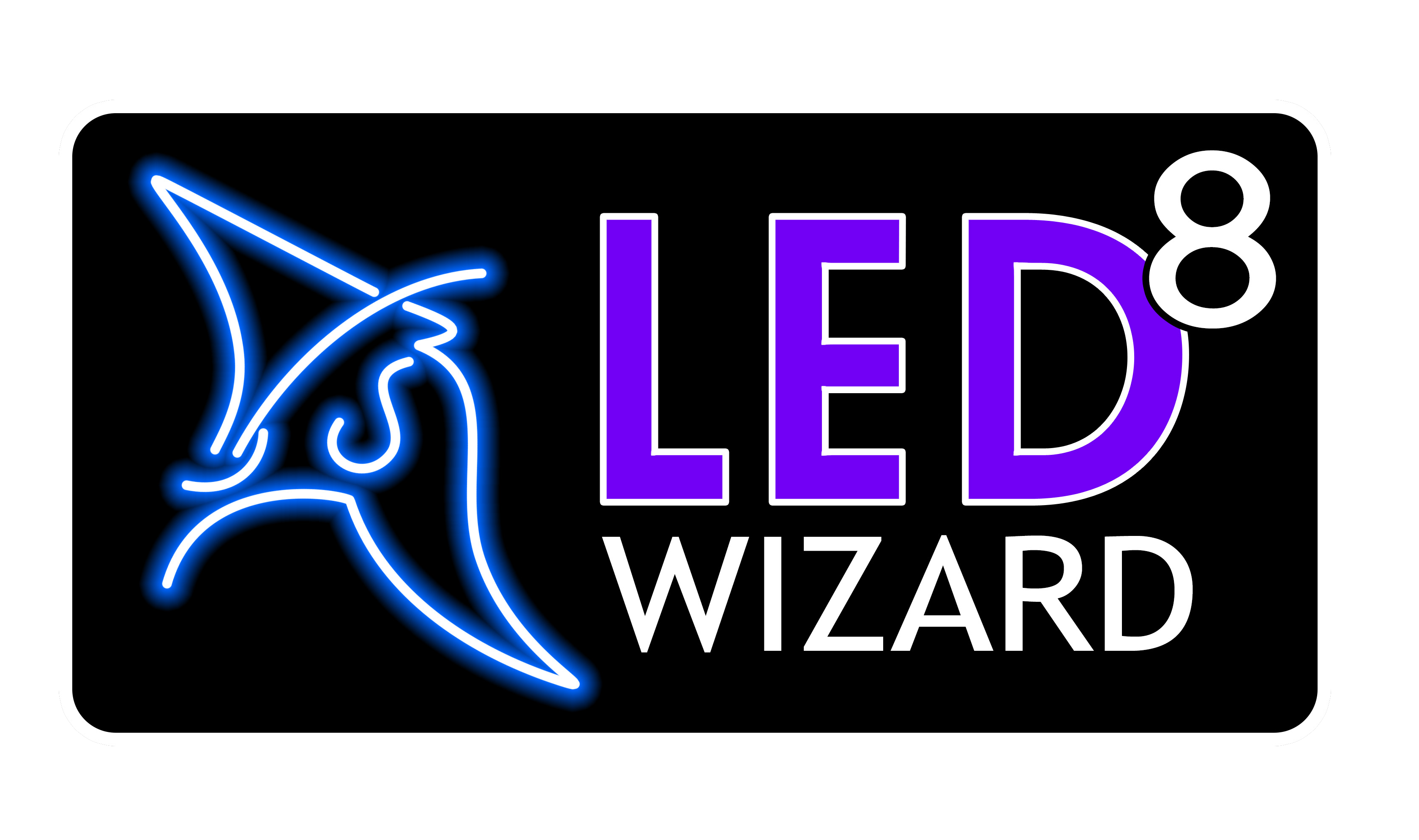Vectorizing is the process of converting bitmap images to vector artwork, also called "Raster to Vector Conversion."
In order to create an LED layout, LED Wizard prefers vector artwork. This section discusses the Vectorize Tool, but also see the Freehand Drawing Tool and On Screen Digitizing Tool as additional options. The Freehand Drawing Tool can be used to draw a path of LED modules on a blank screen or on top of a bitmap object, so it is no longer a requirement that there be vector artwork.
Before we discuss the specifics of the Vectorize tool, it's important to realize that not every bitmap file is suited to be vectorized. The best results will come from artwork that has "spot colors" and not blends, gradients, etc. A photograph of a sign to be retrofitted should be cropped to the sign itself to exclude any busy backgrounds.
First, select the bitmap that you want to Vectorize and then click on the Vectorize icon or select Vectorize from the Image Menu.
The Vectorize property bar will be displayed along the top of the screen:

Before you can vectorize, you often need to select the specific colors that exist in the bitmap image, which is called posterizing the image, which happens during the vectorizing process.
Simply click on the various colors in the bitmap image and they will appear in the color bar as shown above.
Here is a description of each field/option in the Vectorize property bar.
Smooth
This option will smooth the pixels for a better result.
Include Border
This option keeps any border from the original graphic. Using this option can result in a reversed color result.
Line Art
This option treats the image as a simple two color image.
CPE
This enables multiple color editing.
Transparency
This option lets you set how transparent the bitmap will be after vectorizing, so you can overlay the bitmap and vector graphics for final touch up editing. To be clear, after vectorizing, you will have both a bitmap and a vector object placed side by side.
Corners
This option enables detection of corners. Without this checked, you often get smoother results, but no sharp corrners.
Lines
This option will prevent any arcs or bezier curves from being created. You can then use other tools to convert to curves.
Bezier
This option will create bezier curves, which often match the original artwork much better than arcs.
(Tolerance drop down list)
This option works with the Bezier option, and determines how tight the tracking is. A smaller value will result in more Bezier curves that very closely track the original bitmap, while a larger value will result in fewer Bezier curves that may have some deviation from the original bitmap.
(Colors selected)
This shows colors currently selected from the bitmap image. While you are in the Vectorize tool, the cursor will change to an eye dropper graphic. Click on the colors from the bitmap that you want to vectorize and those colors will be added to the color indicator. Colors that are not added in this way will be skipped during the Vectorize process.
(Settings list)
This is the list of presets you can choose from. Select Settings to define more or edit the existing presets.
Settings
Click this button to bring up the Vectorize Settings dialog box.
Vectorize
Press this to proceed with Vectorizing.
The resulting vector graphic will be placed to the right of the original bitmap. Depending on the transparency setting you chose, this original bitmap may be grayed out, but should still be visible so that you can overlay the vector graphic to check for accuracy.
 LED Wizard 8 Documentation
LED Wizard 8 Documentation
 LED Wizard 8 Documentation
LED Wizard 8 Documentation